Seville Bucket List: 16 Epic Things to Do in Seville
The capital city of Andalucia boasts opulent palaces, charming hidden squares, and a culture bathed in sunlight, offering a plethora of things to do in Seville. Immerse yourself in the heart of Andalucía to discover Spanish celebrations and festivals.
With the distinct Moorish influence and a maze of narrow streets, Seville is a city meant to be relished. Its rich history has gifted the Andalucían capital with a captivating blend of architectural styles, a vibrant and colorful culture, and an array of enchanting experiences.
Marvel at the grandeur of Christian opulence interwoven with Islamic architectural designs in majestic palaces. Delve into exquisite works of art by Spanish masters showcased in rooms as luxurious as the art they hold.
Stroll through verdant parks, wander down cobblestone lanes, and unwind with a drink in secluded squares shaded by fragrant orange trees. Seville beckons you to explore its beauty and embrace its unique blend of history and modernity. In this post, learn about the best things to do in Seville, Andalucia.
Seville Bucket List: 16 Epic Things to Do in Seville
How To Get To Seville
Seville stands out as a highly accessible destination in Spain, offering excellent flight connections from various European cities and a well-developed local train network.
By Air
Sevilla International Airport (or San Pablo Airport) is conveniently located just a 20-minute taxi ride from the city center. A taxi fare typically amounts to around €22 (plus €1 per bag), with taxis readily available outside the main terminal.
Alternatively, a bus service (€4) operates from the airport to the city approximately every 20 minutes, running from 5 am to 1 am. The bus route includes stops at key locations such as the Sevilla Santa-Justa train station and Plaza de Armas, with the journey lasting around 35 minutes.
By Train
Spain’s efficient rail network features high-speed trains that connect major cities seamlessly. If you are already in the country, traveling by train is considered the optimal way to reach Seville.
The primary train station serving Seville is Sevilla-Santa Justa Train Station. Trains offer convenient connections to other Spanish cities such as Córdoba (45 minutes away), Madrid (approximately 2 hours and 30 minutes), and Málaga (2 hours).
How Many Days In Seville
The ideal duration for a visit to Seville can vary depending on your interests and the pace at which you prefer to explore the city.
However, to fully immerse yourself in Seville’s rich culture, history, and vibrant atmosphere, I’d recommend to spend at least 3 to 4 days in the city.
This timeframe allows you to visit major attractions, experience the local cuisine, wander through charming neighborhoods, and appreciate the beauty of this enchanting Spanish city.
For a quick weekend getaway – and Seville makes for an excellent European weekend break. A 2-day visit would enable you to explore the majority of the city’s key attractions.
I’ve curated a comprehensive 3-day itinerary for Seville, optimizing your time to ensure you experience everything efficiently.
Best Time To Visit Seville
Seville experiences an inland climate characterized by mild winters and scorching summers.
During the winter months from December to February, humidity and chilliness can be felt, especially near the Guadalquivir river.
Optimal weather conditions in early spring, from March to May, offer pleasant days without extreme heat.
Personally visiting Seville in April, I found it to be the perfect time to explore the city.
Summer, spanning from June to August, brings intense heat with temperatures soaring above 40 or even 45 degrees Celsius.
July, in particular, sees a decline in city activity due to the extreme temperatures.
This season presents an opportunity to either avoid Seville or take advantage of the sparse tourist crowds.
Early fall showcases clear light, making it an ideal time for capturing stunning photos as the city reawakens after its summer hiatus.
Top Things To Do in Seville For Free
- Plaza de España
- Barrio Santa Cruz
- Parque de Maria Luisa
- Centro Historico de Sevilla
- Triana
- Basilica de la Macarena
- Plaza del Triunfo
- Mercado de Triana
- Calle Sierpes
- Real Fabrica De Tabacos
Best Things To Do in Seville in 1 Day
- Breakfast at Triana Market;
- Triana Ceramic Centre;
- Guadalquivir River City Cruise;
- Real Alcázar, Seville’s cathedral, and the Giralda Tower;
- Lunch at Restaurante Mirador de Sevilla;
- Flamenco Dance Museum;
- Plaza de Espana and Maria Luisa Park;
- Tapas Tour;
- Horse-Drawn Carriage Ride;
- El Torre del Oro.
Best Things To Do In Seville
1. The Royal Alcázar of Seville
The Royal Alcázar was at the top of my Seville must-visit list, and having finally experienced its grandeur, I’m eager to return.
Still in use today, the Real Alcázar de Seville stands as one of Europe’s oldest royal residences.
This exquisite showcase of Mudejar architecture is a must-see in Seville, with each room and courtyard reflecting the evolution of Spain’s culture over centuries.
Don’t miss the enchanting Patio of the Dolls, the serene Baños de Doña María de Padilla, and the elegant Charles V’s Apartments!

Beyond the palace, I was captivated by the sprawling gardens adorned with fragrant flowers, tranquil ponds, and inviting pools.
Depending on your visit timing, revel in the spring blooms or capture stunning photos with fewer tourists around during the winter months.
Don’t miss out on seeing the hedge maze—it’s a delightful adventure! Keep in mind that summer visits may entail bustling crowds and scorching heat, so arriving early is key to beat the heat and the masses.
Much of the palace is now accessible to the public, allowing easy exploration of its intricate patterns and hand-painted tiles.
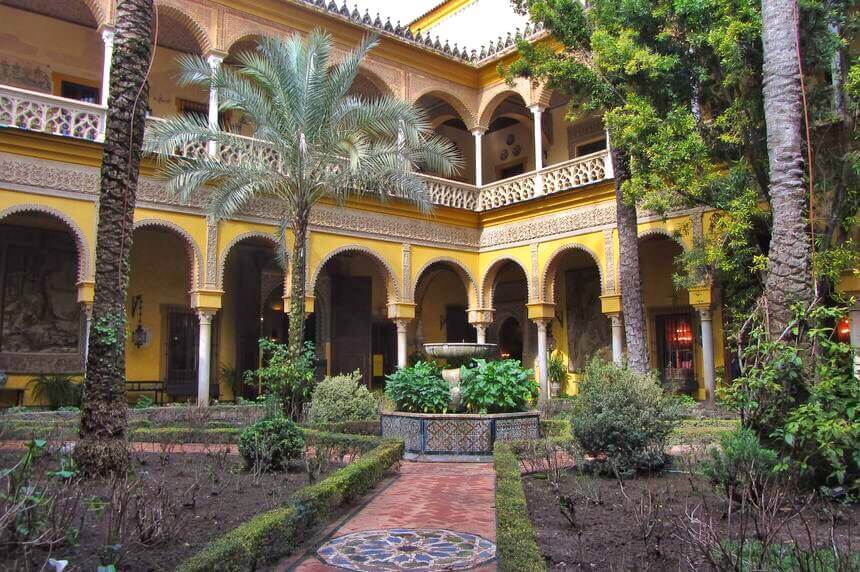
While guided tours are available upon entry, informative signs in English in each room negate the need for additional fees.
Allocate at least 3-5 hours to fully immerse yourself in every corner of the palace and its gardens for ample photo opportunities.
It took me 3 hours to see everything I desired, but in hindsight, extra time would have been beneficial.
2. Wander Around Seville Cathedral
As a history enthusiast, visiting La Catedral de Seville was a non-negotiable for me, and it did not disappoint.
The cathedral’s sheer size is awe-inspiring. Attempting to capture its grandeur from below proved challenging.
Upon stepping inside, I was greeted by a captivating blend of chapels, naves, and bas-reliefs. I allocated two hours to thoroughly explore the cathedral’s interior.
For photography enthusiasts, the dimly lit interiors offer an ideal setting for practicing long exposure photography.
Upon its completion in the 16th century, the Seville Cathedral surpassed Hagia Sophia as the world’s largest cathedral.
Constructed as a testament to the city’s prosperity, the cathedral’s four facades boast fifteen doors intricately depicting biblical scenes.
Within its walls, the tomb of Christopher Columbus and his son commands attention beneath the expansive Gothic ceiling.
However, the true gem of the Seville Cathedral is the Chapter House, an extraordinary domed chapel adorned with masterpieces by the renowned artist, Murillo.
For an unparalleled experience, consider embarking on a roof tour, which necessitates booking at least one week in advance.
Optimal timing for a visit to the Cathedral of Seville is around 4:30 pm, as the crowds begin to dwindle. The lighting conditions are more favorable compared to midday.
3. Climb La Giralda Tower
Originally part of a grand mosque completed in the 12th century, the bell tower underwent a transformation over time.
Following the mosque’s collapse, the remarkably preserved minaret was repurposed into a Catholic bell tower, now crowned with a weathervane.

La Giralda bell tower offers a unique ascent to its summit via gently sloping ramps. A design that allowed the old muezzin to be transported to the top on a donkey for the call to prayer, eliminating the need for a challenging climb.
This vantage point provides unparalleled panoramic views, offering a bird’s-eye perspective of Seville’s iconic landmarks, including the Guadalquivir River and the Plaza de Toros.
Access to the tower is inclusive with the Cathedral ticket priced at €11, with timed entries to manage visitor flow.
Visitors should be prepared for a climb of 34 flights of stairs, as there is no elevator available.

Make sure not to overlook the intricate Mudejar carved wooden door on the 9th floor for a remarkable architectural detail.
4. The Countess of Lebrija’s Palace – Casa Palacio de la Condesa de Lebrija
Casa Palacio de la Condesa de Lebrija stands as a historic palace in Seville, housing one of the world’s most significant collections of Roman mosaics.
The palace once belonged to Doña Regla Manjón Mergelina, the Countess of Lebrija. This palace bears the legacy of a self-taught archaeologist who, due to gender discrimination, pursued her passion after being denied a university education.
Today, the palace showcases a wealth of captivating artifacts gathered from her global voyages. The opulent ambiance of the 6,000-book library, adorned with exquisite wood inlay ceilings and complemented by a Murillo painting, exudes a sense of grandeur.
The crown jewel of this palatial abode is undoubtedly the collection of Roman mosaics. It was painstakingly acquired by the countess from the Italica Amphitheatre to preserve them from destruction.
Entry tickets grant access to the ground floor Roman mosaics for a self-guided exploration.
To explore the first floor, visitors are guided through a tour included in the ticket price.
5. Barrio Santa Cruz Neighborhood
Wander through the enchanting Barrio Santa Cruz neighborhood.
The former Jewish quarter boasts narrow cobblestone streets, and vibrant flower-filled patios that transport you to a bygone era reminiscent of Medieval tales.
Strolling along these picturesque streets, I found myself drawn into the world of Prosper Mérimée’s novella “Carmen.”
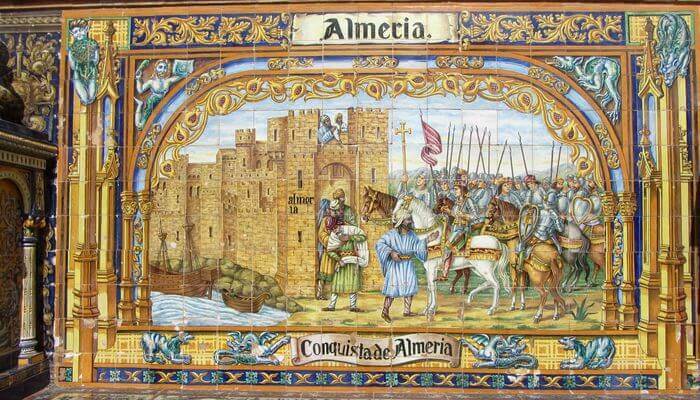
This neighborhood served as the backdrop for the Figaro plays by Pierre-Augustin Caron de Beaumarchais and the legendary “Don Juan” by Tirso de Molina.
One of the neighborhood’s highlights is Plaza de Doña Elvira, a truly romantic setting in Seville.
Adorned with fragrant orange trees, I whiled away hours in this charming square, savoring the tranquil spring evenings.
Seated on a bench embellished with traditional ornaments, I soaked in the ambiance and beauty of this serene spot in the heart of Seville.
For a cultural detour, visit Casa de Murillo, the former residence of the renowned Spanish painter. Explore a small exhibition detailing his life and works, all at no cost. While not the most extensive museum in Seville, it offers a worthwhile glimpse into Murillo’s legacy.
6. Indulge in Tapas
I have a deep appreciation for tapas. While I can’t pinpoint the exact moment I first savored these delightful dishes, I’ve been captivated ever since.
The beauty of tapas lies in the ability to relish and explore a wide array of delectable bites without feeling overly full.
This culinary tradition is perfect for socializing with friends over drinks, creating a lively and convivial atmosphere.
Tapas are typically enjoyed in bars, restaurants, and homes between meals, serving as a delightful prelude to dinner.
It’s a common sight to see locals flocking to bars after work, relishing a diverse selection of savory, sweet, and spicy tapas.
From simple delights like battered squid rings to more intricate offerings such as Galician-style octopus, tapas cater to a range of tastes and preferences.
With over 3000 bars scattered across Spain, many establishments offer a fantastic tapas experience suitable for families.
These bite-sized wonders come in various forms. They range from chorizo-laden croutons and sliced ham and cheese to classic Spanish garlic tapas and delectable stuffed olives. Each plate bursting with flavor and creativity.
7. The Venerables Priests’ Hospital – Hospital de los Venerables Sacerdotes
Once a hospice, the Hospital has been transformed into an art gallery housing some of Seville’s most cherished paintings.
A standout feature of the Hospital de los Venerables is its opulent Baroque Church, a mesmerizing showcase of artisanal skill boasting intricate frescoes adorning the vaulted ceiling and expansive domes.
Renowned artists Murillo and Valdez contributed to the church’s magnificence.
Gallery Room 7 hosts an exceptional art collection within a dimly lit, temperature-controlled environment.
This curated selection includes masterpieces by Zurburán, Montanes, Murillo, El Greco, and Velázquez, offering visitors a glimpse into the rich artistic heritage.
8. Palacio de las Dueñas
The Palacio de las Dueñas is a historic palace with origins dating back to the 15th century.
Once the residence of the Duke of Alba, this magnificent palace boasts stunning landscaped gardens, intricate tile work, and opulent courtyards.
During the spring season, the patios burst to life with vibrant Bougainvillea vines cascading over marble pillars.
The exquisite carvings and arched doorways showcase the palace’s unique Moorish architectural influences.
Renowned for its lush gardens nurtured by the fertile Andalusian soil, the palace is hailed as one of the world’s great botanical wonders.
At its heart lies the main courtyard, encircled by graceful arched terraces, offering visitors a glimpse into the grandeur and beauty of this historical gem.
9. Experience Flamenco at a Tablao
No visit to Seville is truly complete without immersing yourself in the captivating world of flamenco.
This passionate dance form is a fusion of Moorish, Jewish, Gypsy, and Spanish musical traditions, originating from the vibrant southern regions of Spain.

While the exact birthplace of flamenco remains a topic of debate among enthusiasts, its cultural significance cannot be understated.
Although the precise origins may be uncertain—whether in Jerez, Granada, or Seville—one thing is clear. Witnessing a flamenco performance is one of the best things to do in Seville.
In Seville, known for its plethora of flamenco shows, Los Gallos stands out as an authentic venue nestled in the Santa Cruz neighborhood.
The entrance fee may be higher compared to other tablaos. But the experience promises an unparalleled display of the grace and intensity of flamenco dance in a single setting.

Allocate a minimum of 2 hours to fully immerse yourself in the show, ensuring you witness the mesmerizing spectacle until its conclusion.
Embrace the soul-stirring rhythms and poignant storytelling of flamenco for an unforgettable cultural experience in Seville.
10. Metropol Parasol (Las Setas)
The Metropol Parasol, affectionately known as Las Setas or Setas de Seville, is believed to be the world’s largest wooden structure.
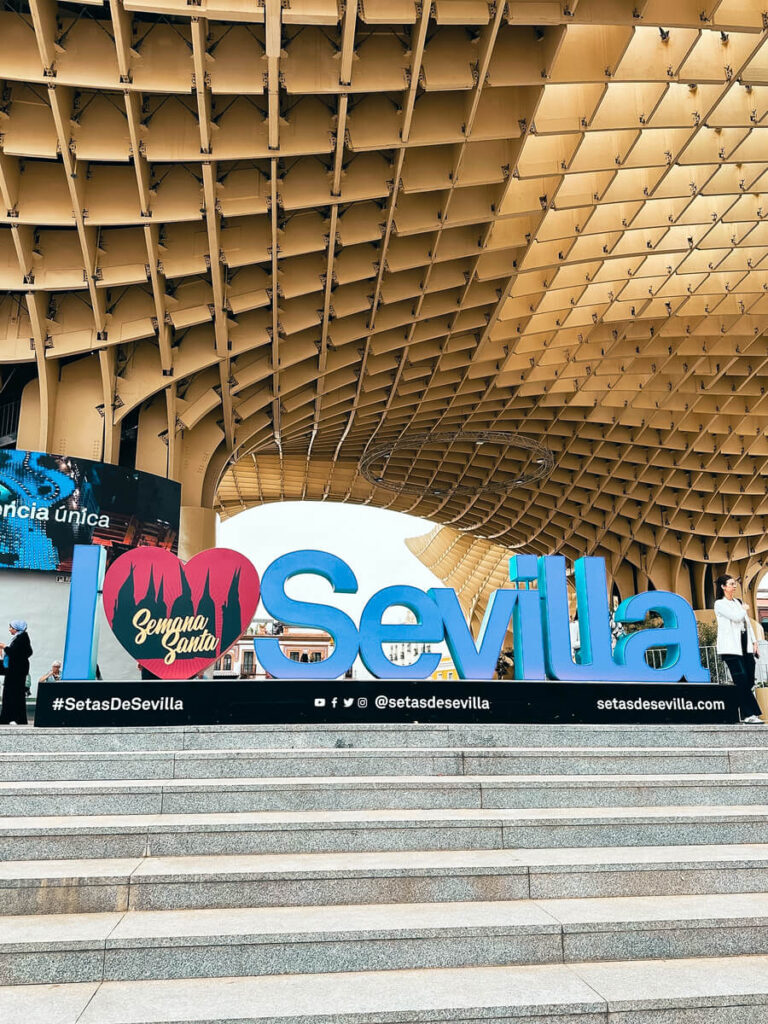
Resembling colossal mushrooms arching over La Encarnación square in El Centro, this architectural marvel is a sight to behold.
Visitors can ascend to the panoramic walkway via lifts, treating themselves to unparalleled views of the cityscape that stretch as far as the eye can see.
While the entry fee has significantly increased to €15 in recent years, I find it a bit challenging to justify the cost.
Nonetheless, for first-time travelers to Seville, this experience remains a must-do activity.

Beneath the structure, a small museum showcases Roman and Moorish artifacts, adding a touch of history to the contemporary structure.
A bustling market awaits visitors at street level, while outdoor terraces on levels 2 and 3 offer additional spaces to soak in the surroundings.
11. Casa de Pilatos
Nestled in the heart of Seville, Casa de Pilatos is an exquisite palace showcasing prominent Mudéjar influences.
The lower courtyard boasts a striking Italian Renaissance fountain and sculptures, accompanied by a gothic chapel on either side.
Venturing upstairs, visitors can explore the former living quarters of the owners, preserved until just a few years ago.
The rooms, illuminated by Mudéjar windows, are adorned in the style of a grand European residence.
Noteworthy among the palace’s treasures is its extensive collection of Spanish tiles, considered one of the largest in the world.
A visit to Casa de Pilatos offers an opportunity to wander through a blend of architectural styles, making it a captivating addition to Seville’s array of attractions.
12. Calle Sierpes
Calle Sierpes represents the vibrant commercial district of Seville. It offers a wide range of items from typical tourist trinkets to authentic Spanish embroidery.
This bustling street is a hub of activity and exploration in the city.
Established in the heart of Calle Sierpes, Confitería La Campana stands as an iconic institution known for its delectable pastries crafted through generations.
Papelería Ferrer, Spain’s oldest stationary shop, exudes a sense of tradition and history. Meanwhile, Sombreros Maquedano is a charming hat store brimming with character and ambiance.
The pedestrianized shopping area around Calle Sierpes features canopies that provide relief from the scorching Seville sun during the summer months.
Begin your shopping excursion at Sierpes and then venture down the adjacent streets of Calle Rioja, Calle O’Donnell, and Calle Velázquez for an immersive retail experience.
13. María Luisa Park
During a delightful late April visit to María Luisa Park, I relished the sight of blooming roses and the sweet fragrance lingering in the air.
As the largest public park in Seville, I meandered through its pathways, admiring the serene ponds teeming with swans and ducks.
The park’s transformation into a picturesque oasis can be attributed to the Ibero-American exhibition of 1929, which introduced magnificent fountains, lush garden arbors, and inviting benches. María Luisa Park truly stands as one of the best things to do in Seville.
While exploring, I encountered statues honoring renowned individuals either born in Seville or closely tied to the city.
Local friends recommended the park as an ideal retreat from the scorching summer temperatures.

With its proximity to notable attractions like The Museum of Art, The Archaeological Museum, and the iconic Plaza de España, I am already looking forward to revisiting this tranquil haven on my next trip to Seville.
14. Bellas Artes Seville
The Museo de Bellas Artes stands as a prominent art collection within Spain. It boasts a beautifully restored convent that showcases masterpieces spanning from the 15th to the 20th century.
Among the esteemed artists featured are El Greco, Velásquez, and Zurbarán, each contributing to the museum’s rich tapestry of artistic expression.
A highlight of the museum is the awe-inspiring paintings by Murillo, prominently displayed within the former church, commanding attention with their grandeur and emotive depth.
From brooding works dating back to the Middle Ages to modern art pieces of the 20th century, the museum offers a captivating journey through various artistic movements.
Entrance to the museum is free for EU residents, while non-residents can enjoy access for a nominal fee of €1.50. It makes this place an accessible cultural treasure for art enthusiasts and visitors alike.
15. Mercado de Triana
The Mercado de Triana is situated on the historic site of the Castle of San Jorge. It served as the Inquisition’s headquarters from 1481 and offers a fascinating blend of history and modern-day vibrancy.
Today, navigating through the maze of stalls within the market is a sensory delight.
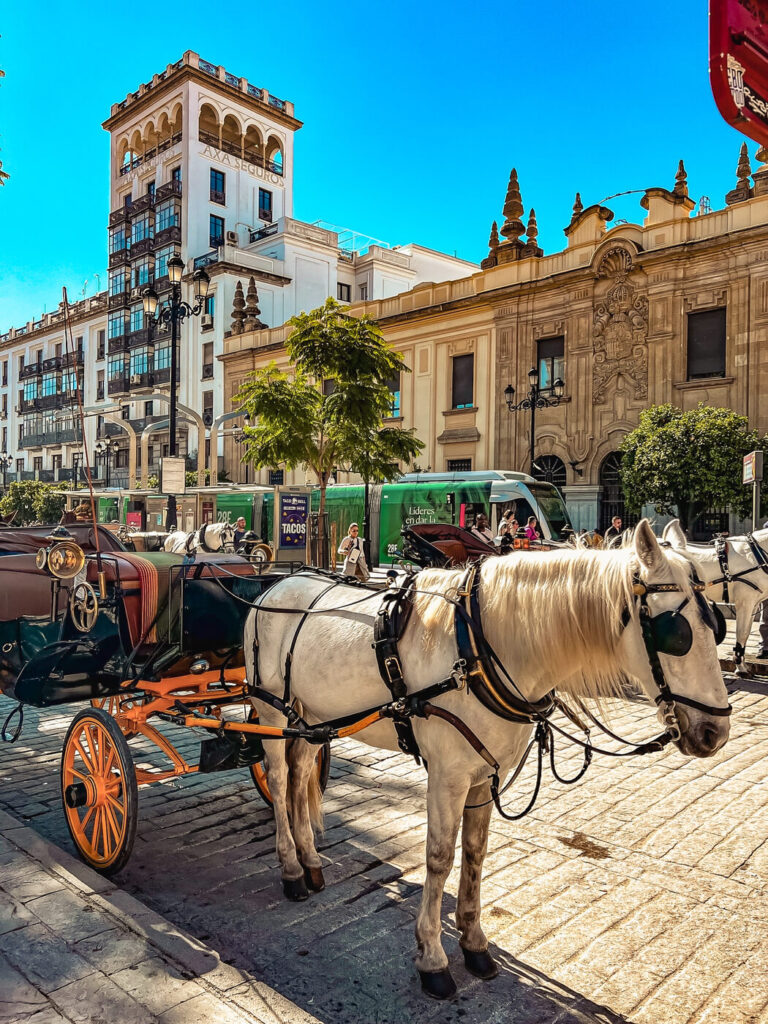
Brimming with local produce and the lively hustle and bustle of Spanish life, it stands out as one of Seville’s most authentic markets.
Visitors can expect to encounter a mix of traditional Spanish vendors and artisanal suppliers, each showcasing their specialties with details artistically hand-printed on ceramic panels.
Here you can indulge in a cup of coffee paired with a delectable pastry, savor a local beer, or relish a Spanish twist on pizza at Obrador la Osa.
16. Explore the Flea Markets
What fascinates me about flea markets? Well, as a historian, these places hold a special allure for me.
Flea markets are like treasure troves of history, exuding a unique ambiance that allows you to connect with the past in a tangible way.
For me, it’s akin to reaching out and touching history itself.
While I may not typically seek out second-hand clothes or home decor at flea markets, I am drawn to rare books, vintage photographs, and an array of intriguing trinkets. These are often available at surprisingly low prices.
Each flea market possesses its distinct character and charm.
In Seville, embarking on a quest for bargains can lead you to several weekly flea markets, so planning your visit is key. Let me share insights into two of my favorite markets:
Venture to Calle Feria street bright and early on Thursday mornings to immerse yourself in the Mercadillo del Jueves.
Here, flamenco dresses, artwork, old cell phones, and an eclectic mix of items are artfully displayed on stalls and tables.
From furniture and coins to pottery and books, I relish spending an entire day scouting for exceptional deals at El Jueves!
Remember, the early bird catches the worm! Rise with the sun on Sunday mornings to explore El Charco de la Pava.
While the market operates from 8 am to 3 pm, it may not offer an extensive selection. My initial visit reminded me of vibrant gypsy festivals.
Expect to find fruits, second-hand clothing, and spare parts aplenty.
Unearthing rare treasures may prove challenging, but this market is ideal for snagging affordable souvenirs for loved ones.
Discover Bohemian glass, vintage porcelain dolls, and classic statues, some originating from China.
Haggling over prices is customary here, so sharpen your negotiation skills. Stay vigilant about your belongings to thwart any pickpocketing incidents.
Pro tip: Arrive at El Charco de la Pava as early as possible, as shade is scarce. Navigating the market post-10 am can be exhausting due to the scorching heat. Plan accordingly to make the most of your flea market excursion.
Other Cool Things to Do in Seville
I take great care in curating the attractions featured in my city guides, selecting what I believe are the top experiences to enjoy. However, if you find yourself with extra time in Seville, here are a few additional attractions worth considering:
Archivo General de Indias
While the Archivo General de Indias houses important historical documents, its allure lies in its grand Renaissance architecture. The upper levels showcase exquisite vaulted ceilings, ornate wood paneling, and elegant marble floors, providing a glimpse into the region’s rich past.
Plaza de Toros de la Real Maestranza
As the oldest bullring in Spain, the Plaza de Toros de la Real Maestranza de Caballería boasts a seating capacity of 14,000 passionate bullfighting enthusiasts. Guided tours, available in English and Spanish, provide an insider’s look into the inner workings of the arena, despite some organizational challenges.
Antigua Fábrica de Tabacos
Formerly a tobacco factory, the Antigua Fábrica de Tabacos now serves as the University of Seville’s headquarters. This grand Renaissance edifice features intricate cut-stone facades, serene inner courtyards, and majestic halls. Visitors are welcome to explore the premises at no cost.
Torre del Oro
Situated along the Guadalquivir River, the Torre del Oro stands as the sole remainder of the Moorish walls that once encircled the city. While the small naval museum inside may not entirely justify the €3 entry fee, the rooftop viewing platform offers a rewarding experience.
Day Trips from Seville
Nestled in the heart of Andalusia, Seville offers an ideal starting point for captivating day trips. Whether you wish to sample local jerez (sherry) or venture into the renowned pueblos blancos (white villages), there are numerous exciting excursions to choose from.
Itálica
Located just 7 kilometers from the city center, Itálica makes for an effortless day trip from Seville. These remarkably well-preserved ruins once belonged to one of the most significant and sophisticated Roman cities globally. Guided tours, with or without transportation from your hotel, can be easily arranged to delve into this historical site.
Córdoba
Córdoba, an enchanting Andalusian city, stands out as my preferred day trip from Seville. Explore the awe-inspiring Mezquita-Catedral, a structure renowned worldwide, and wander through picturesque patios. If you can only embark on one day trip from Seville, I highly recommend choosing Córdoba.
Jerez
Part of the sherry triangle in southern Spain, Jerez de la Frontera beckons with its rich cultural heritage. With frequent train services and a travel time of just over an hour, Jerez is a convenient day trip option from Seville. Immerse yourself in a sherry tour, indulge in tastings in a charming square, and savor some of the finest cuisine in the Andalucía region.
Cádiz
Cádiz, an ancient coastal town, allures visitors with its broad boulevards lined by stately terrace houses. The city exudes a laid-back allure, characterized by a blend of faded grandeur, Roman influences, and an array of excellent local tapas bars. A train journey of approximately 1 hour and 30 minutes from Seville transports you to this captivating destination.
Caminito del Rey
Embark on a captivating 7-kilometer hike along the Caminito del Rey, traversing a breathtaking gorge on an elevated path suspended 100 meters above the ground. This mostly level trail is suitable for individuals with a moderate level of fitness. Discover further details in our guide to the Caminito del Rey walk.
White Villages
Nestled amidst verdant hills and rugged outcrops, the White Villages of Andalucía offer a scenic drive brimming with charm. Arcos de la Frontera stands out as one of the finest among these villages, a mere one-hour drive from Seville.
Things to Do in Seville Spain in September
- Experience the Nights in the Gardens of the Real Alcazar of Seville;
- Embark on a scenic boat ride on the Guadalquivir River;
- Indulge in a day of fun at Isla Magica and Agua Magica;
- Head to the Patio for an open-air movie screening;
- Immerse yourself in the vibrant Flamenco Biennial.
Best Things to Do in Seville Spain in November
- Discover the wonders of Maria Luisa Park;
- Join a guided exploration of the Royal Alcazar;
- Immerse yourself in the National Flamenco Singing Contest Soleá de Alcalá;
- Wander through the enchanting mysteries of Seville at dusk;
- Recite Don Juan Tenorio at the Cemetery of San Fernando.
Things to Do in Seville Spain in May
- Celebrate at the Feria de Abril;
- Explore the lush gardens;
- Delight in a picnic in the park;
- Admire the scenic views from the river;
- Embark on a day trip.


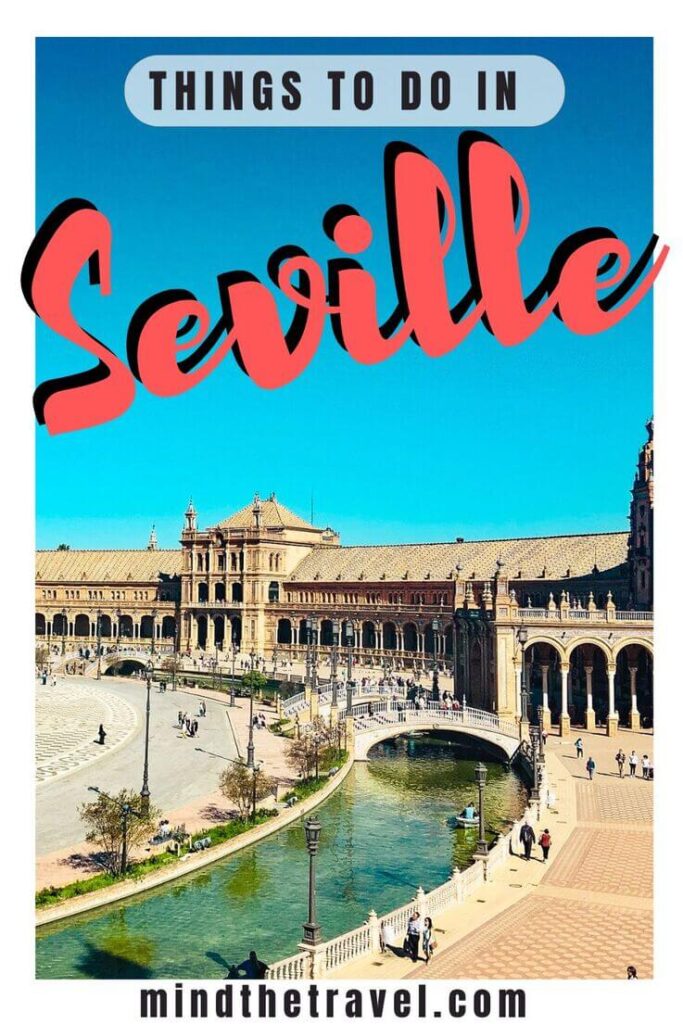

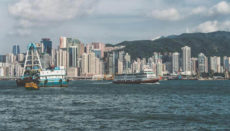
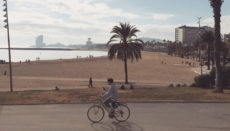
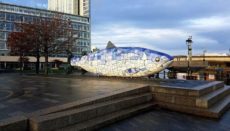
Sorry, the comment form is closed at this time.